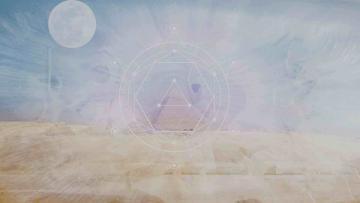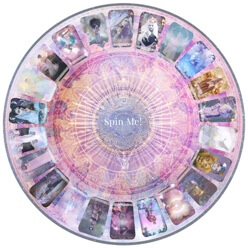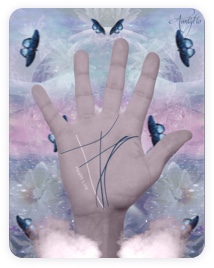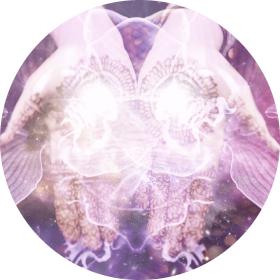God
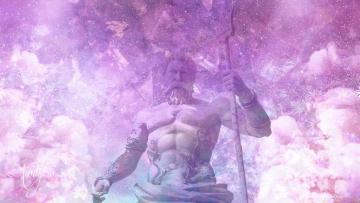
Uncover hidden spiritual meanings
Universal male deity that reigns over humanity and the consort of the Goddess.
Not to be confused with Gods- Male and Female deities that are described as being the creators or rulers of mankind. Every civilization has their existence noted. See – specific deity names, God, Goddess. The God himself is an important aspect of paganism but he has many names and faces within the different witchcraft based religions. The aspect of the God is widely viewed as the Horned God- 1. The horned aspect of the God that is lord over the wild or nature.
He is a consort of the goddess and is beneficial in nature. He is the ‘teaching aspect’ of the god and the High Priest. He teaches the priestess magic and how to be strong in some traditions. In Wiccan traditions he is often associated as the horned god of the hunt and associated with virility and raw or primal energies.
The story of the Horned God and the Goddess is transferred to that within the wheel of the year (see – WHEEL OF THE YEAR) where he is born in the winter at Yule and then goes forth and impregnates the goddess as the year progresses. He is the creator of the spear where the goddess is the bow. His energies work alongside the goddess as her mentor, consort, and son. 2. A negative version of the god which is incorrect and presumed to be the image of Satan.
According to the Wiccans, there is a god and a goddess, who are in charge of the divinity. Wicca is all about connecting with the god and goddess within and all around the Covens.
They believe that there are a female and a male part of the universal being which work together in order to form a higher power. There are no restrictions as to who the god or goddess that individuals connect to. They are advised to connect with whichever thing they seem to believe that it is their god or goddess. Wicca is an open religion and doesn’t force the Covens to convert to its practices.
Gods of The Wiccans
When it comes to the other gods, the Wiccans have a huge volume of deities whom they connect to. Some covens don’t give their deities’ names or an association as they feel, doing so will limit and inhibits a connection. But some Wiccans believe that giving their gods names will enable them to connect and supplements them along their spiritual journeys. The belief in a unified goddess is the cornerstone of the Wiccan religion with the idea dating back many thousands of years to when the human race was begun.
The statues of the goddesses are normally referred to as the Venus and incorporate a very well-known female figuring without a face referred to as Venus of Willerndorf.
In recent times, the discovery of Venus, which dates back to over 35,000 years, has reaffirmed the belief of the Wiccans in them. When Christian and Islamic religions started gaining momentum in the belief of a male God and denying the existence of a female counterpart, the Wiccans Venus also started taking the presidency.
Various Wiccan Goddess
Many of the gods and goddesses which are celebrated by the Wicca originated from the Celtic people and their traditions. Brighid according to the Celtic people is a goddess of fertility.
She was adopted by the Christian faith as a saint and Catholics do worship her. The Wiccans celebrated her as a goddess in her original pagan form. She is also recognized by the Wiccans as a triune, a goddess of poetry and protection, making her part of the trinity.
She is said to exist as Brighid the Poetess, Brighid the physician, and Brighid the Smith. Rhiannon is another goddess which has its origins in the Celtic traditions. She was a goddess of the hunt, goddess of the moon and goddess of horses of strength cherished by the Welsh people. She is normally depicted as a red haired beautiful woman with birds and horses surrounding her. Other goddesses of the Celtic Wiccan include Danu, Morrigan, Brigantia, Arianrhod, Cailleach, and Shannon.
The Egyptian goddesses have also found their way in the Wiccan religion, such as the goddess pantheon, Ma’at, Isis, and Sekhmet who offer them with guidance and inspiration during the day to day activities and rituals. Ma’at is an Egyptian goddess who is well known for aiding and ruling justice and truth. She is bestowed to bring balance and order in the world, both to the mundane and the spiritual realms. She is the one who weighs the souls of the dead to see if they are worth to continue living in the afterlife. Isis is known to be one of the great goddess that the Wiccans believe in. She is known as the goddess of nature and magic. There is always an ankh in her hand and that makes her also the goddess of the ritual and children.
We hope you liked this article. Please support us by liking us on Facebook. Thank you in advance.
The Gospel of Witches - Aradia
If Gerald Gardener is the father of the Wicca, then grandfather of Witchcraft as a religion is Charles Godfrey Leland, who is the author of the book Gospel of Witches in English speaking countries. The book is the birth of the witch religion. It is a book which is a composition of notes, short manuscripts, memoranda and notebooks, which were put together with him after being written by an informant on Italian witchcraft and folk magic, the witch woman whom he referred to as Maddalena.
The manuscripts were translated into English and added, and then he added some of his commentaries. He finished working on the book in 1897 and he sent it to David Nutt’s firm for publication. David Nutt was a well-known publisher of folklore scholarship. The publisher had just finished publishing two of Leland’s volumes; Legends of Florence, which was published in 1895 and 1896 respectively and were a success on the market. The manuscripts lay on Nutt’s desk for two years before being published. It took the prodding of Leland for Nutt to finally send it for printing. It appeared in print in 1899 and it only attracted one unsigned review in the Folk-Lore journal, a review which was kind but lukewarm. A more enthusiastic and substantial review appeared two years later in French then no more reviews were forthcoming.
Scholars and The Gospel of Witches
Scholars of witchcraft seemed not to mention the book anywhere; scholars like Margaret Murray, who used it to support her otherwise controversial theories; Montague Summers, who searched for obscure books on magic and witchcraft only mentioned it in his last book of 1945, Witchcraft and Black Magic.
The press also didn’t pay much attention to Leland’s book and only brief notices of the Aradia were seen in prints such as Literary World and the Gentleman’s Magazine, which was published in England and literary Era which was published in the USA. No evidence of the work being widely read is nowhere,
It is only when a copy of this great book fell into the hands of the American poet and novelist that people started learning about it, Theda Kenyon. She took some of the work of the book and published it in her own book Witches Still Live, which was published in 1929.
Leland’s work attracted less attention in the first fifty years which followed its publication; it sat on the shelves of many universities and colleges just because it was published by a reputable scholarly publisher and it was the tradition of colleges to make sure they have a copy of a scholarly work. This changed in the 1950s when Gerald Gardner started publishing books like Witchcraft Today and The Meaning of Witchcraft in which he announced to the world that Margaret Murray was right and that there exist a few witches in England who secretly kept a primeval old religion through many years of Christian rule. He mentioned about himself being initiated into the religion and converting a few people along the way. Most of the rituals that Gardner wrote in his book are also in the Aradia.
Doreen Valiente who is Gardner’s oldest initiate seems to have had a knowledge of the Aradia because she mentions it more than once in her writings. After being initiated in 1953, she was given the work of writing and rewriting rituals with most of her poetic and a ritual having clear echoes of Aradia and from there on the Aradia was assured as a source of inspiration for the craft.
We hope you liked this article. Please support us by liking us on Facebook. Thank you in advance.
By Florance Saul
Oct 2, 2012

